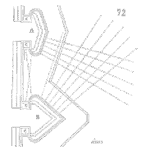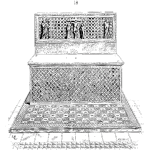A key preparation step for the CRE exam is to have and know how to use a simple calculator. I use my smartphone and a calculator app – and I would not be permitted to use the phone during the exam. Same with tablets, computers, and other common tools that we now take for granted. [Read more…]
CRE Preparation Notes
Prep notes for ASQ Certified Reliability Engineer exam ISSN 2165-8633
The idea of the CRE Preparation Notes series is to provide you short practical tutorials on all the elements that make up the ASQ CRE body of knowledge. The articles provide introductionary material, basics, how-to’s, examples, and practical use guidance for the full range of reliability engineering concepts, terms, tools, and practices.
Keep your knowledge fresh with regular review of topics and tools that make up reliability engineering.
Sign up for the CRE Preparation Notes email list to receive weekly reliability engineering short tutorials.
- Improve your reliability engineering skills
- Learn about the wide range of tools available
- Enhance your resume with the ASQ CRE
You will find the most recent tutorials in reverse chronological order below. Below each article is the section and specific clause of the CRE Body of Knowledge that tutorial addresses. Click on those tags to find other articles on the same topic. To the right on the sidebar, there is a listing of the 7 major categories in the body of knowledge - it's a quick way to find groups of articles on each specific area. You can also use the search function to locate articles, podcasts, or tutorials on specific topics.
Chebyshev’s Inequality

As with the Markov Inequality, we may find useful information from a list of values, say time to failure data. Again, none of the numbers may be negative for this to apply, yet with life data that is rarely the case.
Short on time- a common situation for reliability engineers; we have only the mean, standard deviation and number of values in a list. And, we need to say something about the data and the number or fraction of value above a specific value. [Read more…]
Markov Inequalities

If we have a list of numbers, saw cycles to failure for a test. None are negative. And, we do not have time for a complete analysis before being asked about the results.
What can we do?
In this case, the Markov Inequality may prove useful for a quick assessment of the results. [Read more…]
Hypothesis Tests for Variance Case II

The chi-square (Χ2) test provides the basis for the second case of hypothesis tests for variances. In this case, we want to compare observed and expected frequencies, or counts, of outcomes when there is no defined variance. In other words, we are working with attribute data. [Read more…]
Hypothesis Un-Equal Variance

Hypothesis testing of data may include two populations that have un-equal standard deviations. The t-test for differences considered in a previous post used the assumption of equal variances to pool the variance value. In this test, we want to consider if one population is different in some way than the other and we use the samples from each population directly even if the population have difference variances. [Read more…]
Equal Variance Hypothesis

Hypothesis testing of paired data may include two populations that have the equal standard deviations. The t-test for differences considered in a previous post used the standard deviation of the differences. In this test, we want to consider if one population is different in some way than the other and we use the samples from each population directly. [Read more…]
Paired-Comparison Hypothesis Tests

Hypothesis testing previously discussed (link to past posts) generally considered samples from two populations. Maybe the experiments explored design changes, different component vendors, or two groups of customers. Occasionally you may find data that has some relationship between the samples, or where the samples are from the same population. Paired (or matched) data involves samples that are related in some meaningful way. [Read more…]
Hypothesis Tests for Variance Case I

Statistics is the language of variation. Everything varies, and we use variance (σ2) to describe the spread of the data. For any experimental work aimed at making improvements, whether in the design, manufacturing process or field performance, there are two ways to make improvements. Move the center of the distribution, or reduce the spread of the data. [Read more…]
Hypothesis Tests for Proportion

This is also called the “p test”
When comparing proportions that are from a population with a fixed number of independent trials and each trial has a constant probability of one or another outcome (Bernoulli experiments) then we can use a p test. p is the probability of success, and 1-p is the probability of failure. Caution: stay consistent once you define success otherwise, like me, you’ll have a bit of confusion. n is the number of trials. [Read more…]
K Out of N

The design of a product includes the arrangement of all of the product elements. When considering the reliability of a system, the arrangement matters. Many systems are arranged serially. This means that with the failure of any one element, the system will not work. See the article on Series Systems for more details. [Read more…]
Design of Experiments

Design of Experiments (DoE) and the Analysis of Variance (ANOVA) techniques are economical and powerful methods for determining the statistically significant effects and interactions in multivariable situations. DoE may be utilized for optimizing product designs, as well as for addressing quality and reliability deficiencies. Within the DoE framework, the practitioner may explore the effects of a single variable or analyze multiple variables. [Read more…]
FRACAS

The Failure Reporting and Corrective Action System (FRACAS) is a closed-loop process whose purpose is to provide a systematic way to report, organize and analyze failure data. Implementation of a FRACAS has increasingly become commonplace within an industry. The requirement for implementation of some type of FRACAS within a DoD program was first established in 1985 with MIL-STD-2155. However, in 1995 that standard was reestablished with no changes to content as a handbook, MIL-HDBK-2155, and was recommended as guidance. Today, multiple software solutions exist that provide all the functionality required of a FRACAS. [Read more…]
Reliability Allocations

After the system has been drawn in block diagram form, subsystem and component reliability goals and targets are established. This is a common practice in the development of complex systems, particularly when different design teams or subcontractors are involved. Reliability allocation involves setting reliability objectives for components or subsystems in order to meet a system reliability objective and should occur in the initial stages of design or prior to designing major system upgrades. [Read more…]
Types of Risk

Creating a product or maintaining equipment is actually about our ability to manage risk. The various risks are outlined below, and there are more to consider. This summary covers the basics related to reliability. [Read more…]
Program Elements Part 2

This is a two part series where I outline the basic elements of creating and supporting a reliability program. [Read more…]
- « Previous Page
- 1
- …
- 17
- 18
- 19
- 20
- 21
- …
- 24
- Next Page »